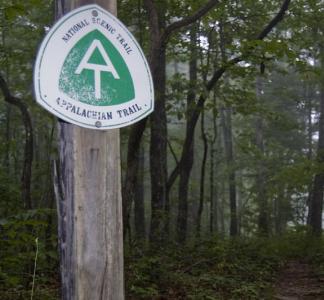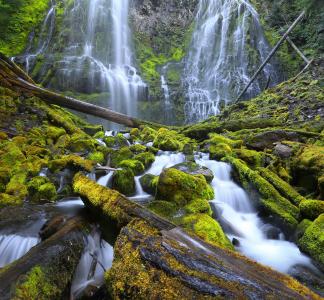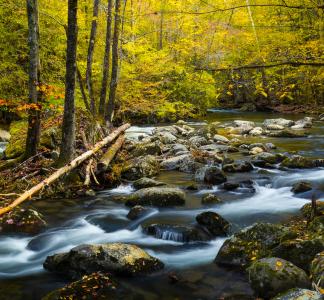Conservation: Appalachian Trail
Mason Cummings, TWS
Protecting our vulnerable mountain lands
Since its completion in 1937, the Appalachian National Scenic Trail (affectionately known as the A.T.) has been a source of adventure, reflection and inspiration. Part of the longest hiking-only trail in the world, the A.T. travels through 14 states and welcomes millions of people annually.
Nearly 100 miles of the A.T. weave through North Carolina. In this state, construction of oil and gas pipelines, like the Mountain Valley Pipeline, could degrade the solitude, natural diversity and incredible views that invite and inspire so many. And now to make matters worse, management plans for the surrounding forests could invite logging and other development into this wilderness.
The lands surrounding the Appalachian Trail offer beauty and solitude for millions of hikers. They include lush forests that harbor species like the cerulean warbler and sweet white trillium.
The threat
Even though the Appalachian Trail itself is protected, many landscapes that it crosses in North Carolina are not. Numerous threats loom for these mountains and their unique plants and animals; from road building and pipeline construction to forest management plans allowing logging.
Among the landscapes at risk are North Carolina’s “Mountain Treasures,” vulnerable landscapes of the Nantahala and Pisgah National Forests. These treasures include a string of spectacular Appalachian balds, or mountain summits covered in native shrubs and grasses, in the Nantahala National Forest. Places like Siler Bald, Tellico Bald, Wesser Bald and Cheoah Bald have few roads and harbor rich old growth forests.
We are actively working with local groups to preserve the integrity of the trail. Iconic hikes on the A.T. should be available for generations to come.
What we're doing
-
Protecting wilderness along the trail
Working for better wilderness protections for lands near the trail during forest management planning.
-
Advancing research
Using science to identify and prioritize public and private land conservation efforts along the trail.
-
Empowering local organizations
Collaborating with organizations like the Nantahala Hiking Club and the Southern Appalachian Wilderness Stewards to get relevant conservation information to the Forest Service for planning decisions.



